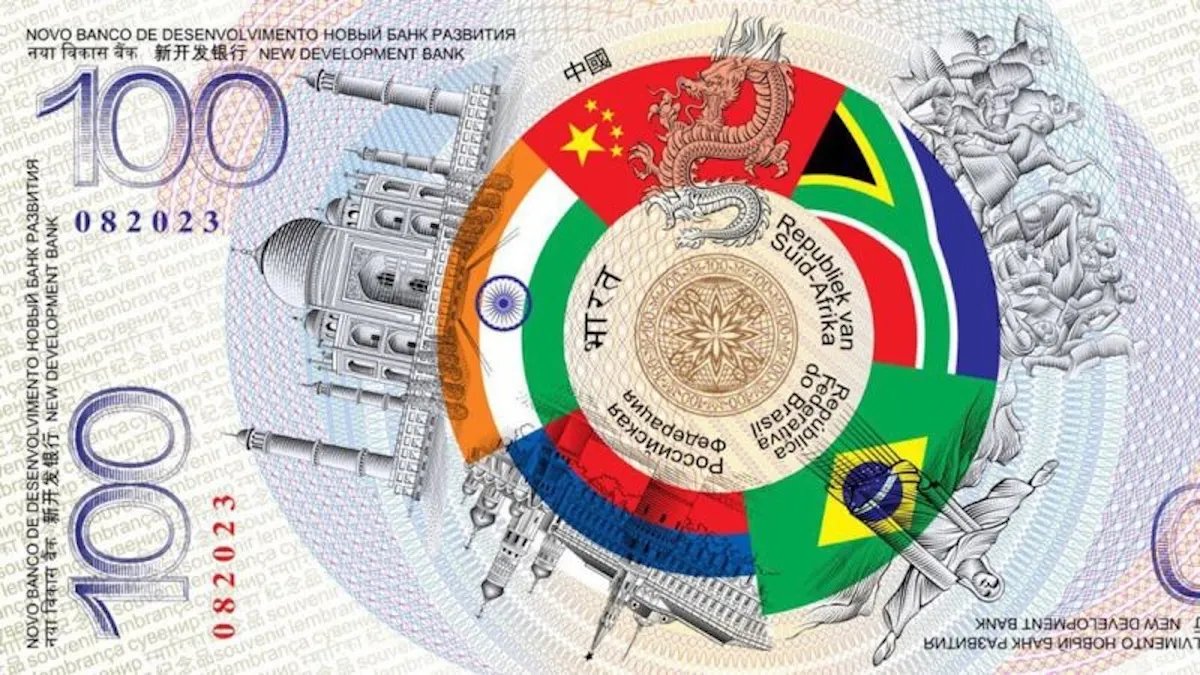The global economic landscape is on the brink of a significant shift as BRICS, the economic alliance comprising Brazil, Russia, India, China, South Africa, and several new members, explores the creation of a new currency system. This initiative aims to challenge the dominance of the U.S. dollar in international trade and finance. As BRICS seeks to establish financial independence and reshape global commerce, the implications for international investors could be far-reaching.
The BRICS Cross-Border Payment Initiative (BCBPI)
Under Russia’s chairmanship for 2024, BRICS has proposed the BRICS Cross-Border Payment Initiative (BCBPI). This ambitious system focuses on:
- Facilitating trade using national currencies: BCBPI aims to reduce reliance on the U.S. dollar by enabling trade settlements in national currencies, strengthening economic sovereignty among BRICS members.
- Creating an alternative to SWIFT: By developing a new messaging infrastructure, the alliance intends to bypass the Western-dominated SWIFT system, which has been a tool for enforcing economic sanctions.
- Developing a multi-currency system: This initiative would encourage investments within BRICS and in emerging markets, supporting economic integration across the alliance.
The BCBPI proposal outlines a comprehensive financial framework, including:
- BRICS Clear platform: A mechanism for efficient cross-border settlements.
- New securities settlement systems: Aimed at streamlining securities transactions using national currencies.
- Financial instruments denominated in national currencies: To further reduce dependence on the U.S. dollar.
Blockchain and Digital Currency Integration
In a move that could revolutionize global payments, BRICS is also developing the BRICS Bridge payment platform. This blockchain-based system is set to transform cross-border transactions by:
- Connecting member states’ financial systems: The platform will facilitate seamless integration between BRICS economies, improving transaction efficiency.
- Leveraging central bank digital currencies (CBDCs): Settlements would be conducted using CBDCs, enhancing the speed and transparency of financial transactions.
- Replacing SWIFT with a decentralized alternative: The use of blockchain and smart contracts would provide a more secure and transparent payment network, immune to external pressures.
- Increasing financial inclusion: By embracing digital technology, the BRICS payment system could make financial services more accessible across emerging markets.
Potential Impacts on the Global Financial System
The creation of a new BRICS currency system could have profound implications:
- Challenge to U.S. dollar dominance: If widely adopted, the system could undermine the dollar’s role as the world’s primary reserve currency. Reduced global dependence on the dollar would impact the U.S. economy and reshape global trade dynamics.
- Economic integration within BRICS: By fostering trade and financial cooperation, the new currency system could strengthen economic ties among BRICS members, boosting investment flows and mutual prosperity.
- Reduced vulnerability to sanctions: A key objective for BRICS is to insulate member states from the risks associated with unilateral sanctions. An independent financial system would provide a buffer against external economic pressures.
- Transformative impact of digital currency: The adoption of blockchain technology and digital currencies could increase efficiency in global finance, reduce transaction costs, and enhance financial inclusion.
Timeline and Development
The 2024 BRICS Summit in Kazan, Russia (October 22-24) has taken place, offering deeper insights into the currency initiative. Brazilian President Luiz Inacio Lula da Silva reiterated his support for the BRICS currency concept, while Russian President Vladimir Putin elaborated on plans to issue a “new global reserve currency.” The discussions at the summit emphasized the importance of creating a financial infrastructure that supports economic integration among BRICS nations and reduces dependency on the U.S. dollar.
Challenges Ahead
Despite the potential benefits, the creation of a new BRICS currency system will not be without obstacles:
- Diverse economic landscapes: Coordinating monetary policies among BRICS nations, which have vastly different economies and financial systems, will be challenging.
- Stability and credibility: Establishing trust and stability in a new currency will require robust economic backing and governance mechanisms.
- Technical hurdles: Implementing a new financial infrastructure across multiple countries is a complex endeavor that will require cutting-edge technology and cooperation.
- International acceptance: Convincing global markets and non-BRICS countries to adopt and trust the new currency system could be a long process.
Conclusion
BRICS’ exploration of an alternative currency system signifies a bold step toward reshaping the global financial order. If successful, it could pave the way for a more multipolar world economy and reduce Western financial hegemony. For investors, this evolving landscape underscores the importance of diversification and staying informed about emerging economic power shifts.
At Invest Offshore, we are closely monitoring these developments. The potential for investment opportunities in emerging markets could increase as BRICS continues to expand its economic influence. We also remain committed to highlighting investment prospects, including West Africa’s Copperbelt Region, which is rich in resources and ripe for forward-thinking investors. Stay tuned for more insights into how these global shifts might impact your investment strategy.
Image created by Silicon Palms

Leave a Reply